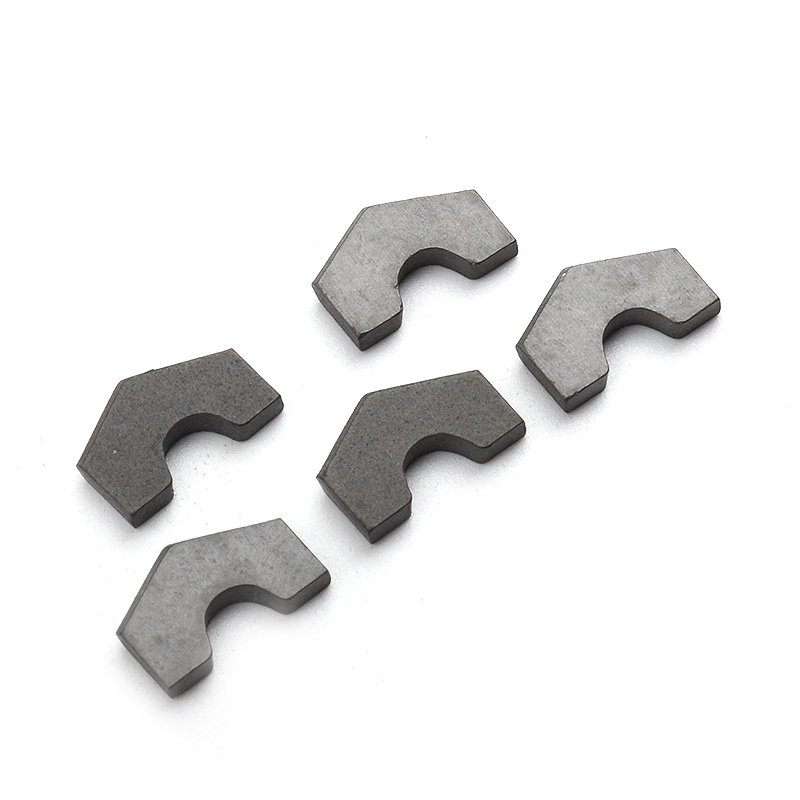2025-10-03
Tool selection in machining often comes down to material compatibility and durability, where both Carbide Brazed Tips and Carbide Insert tools are widely applied. Understanding how grade composition affects performance allows manufacturers to align tool choice with specific machining conditions, ensuring efficiency and accuracy in production.
Carbide tools are made by combining tungsten carbide particles with a metallic binder, typically cobalt. The ratio of carbide grains to binder defines the grade, directly influencing hardness, toughness, and wear resistance. A small change in this balance can shift a tool from being suitable for high-speed finishing to being more effective in roughing heavy materials. For inserts, where consistent performance is essential across multiple edges, grade composition becomes an even more important selection factor.

Grades with higher tungsten carbide content typically deliver greater hardness, making them effective for machining abrasive materials and achieving precise finishes. However, harder grades are also more brittle, which means they may chip under interrupted cuts or heavy loads. For carbide inserts used in high-speed finishing, harder grades maintain edge sharpness and extend usable life, provided the machining conditions are stable and vibration is controlled.
A higher cobalt content in carbide grades increases toughness, allowing tools to absorb impact forces better. This makes them more suitable for roughing operations, interrupted cuts, or machining hard cast iron where tool edges face high stress. In high-volume production, selecting a tougher grade can prevent unexpected edge failure, ensuring stable output. Carbide brazed tips benefit from this toughness as well, particularly in heavy-duty applications where tool rigidity is important.
Machining generates heat at the cutting zone, and different carbide grades respond differently to elevated temperatures. Grades with specific grain structures or added alloying elements maintain hardness at higher operating temperatures, which is critical in continuous cutting.
Selecting the right grade composition requires evaluating both the workpiece material and the machining strategy. For softer, non-ferrous metals, grades that emphasize sharpness and reduced cutting forces are preferred. For hardened steels or cast irons, tougher grades that resist wear and chipping under high loads are more suitable. Manufacturers often use inserts with varied grades depending on whether the task is roughing, finishing, or high-speed machining, ensuring each stage benefits from a tailored tool characteristic.
Carbide inserts provide a wide range of grade options since they are standardized and replaceable. This allows users to choose from many compositions and geometries for different jobs. Carbide brazed tips, by contrast, are often selected when stability and toughness are more important than interchangeability. Both tools rely on grade composition for performance, but inserts offer more flexibility in adjusting grade to suit different applications, while brazed tips deliver strength and endurance in continuous operations.
Although grade composition is a core factor, coatings applied to carbide inserts further influence performance. A grade with high wear resistance may be combined with coatings like titanium nitride or aluminum oxide to extend tool life and improve heat resistance. Coatings work together with grade properties to adapt inserts for specific challenges, such as high-speed cutting or dry machining. Understanding this relationship helps manufacturers make more precise tooling decisions.
Choosing the right carbide insert grade involves weighing multiple factors: material hardness, cutting speed, feed rate, and whether the cut is continuous or interrupted. For shops handling varied production runs, inserts with balanced grade compositions may provide the compromise between hardness and toughness. In operations where one material dominates, selecting a grade optimized for that condition improves both tool longevity and machining efficiency. Supplier data and technical support also help narrow the options, reducing trial-and-error in tool selection.
Grade composition ultimately defines how carbide inserts and brazed tips perform under real-world machining conditions. By focusing on hardness, toughness, and thermal stability, manufacturers can align tooling with their production requirements. Inserts bring the advantage of grade diversity for different tasks, while brazed tips ensure stability where edge integrity and toughness matter most. When grade composition is matched thoughtfully to application needs, machining operations run more efficiently and deliver the desired surface and dimensional results.